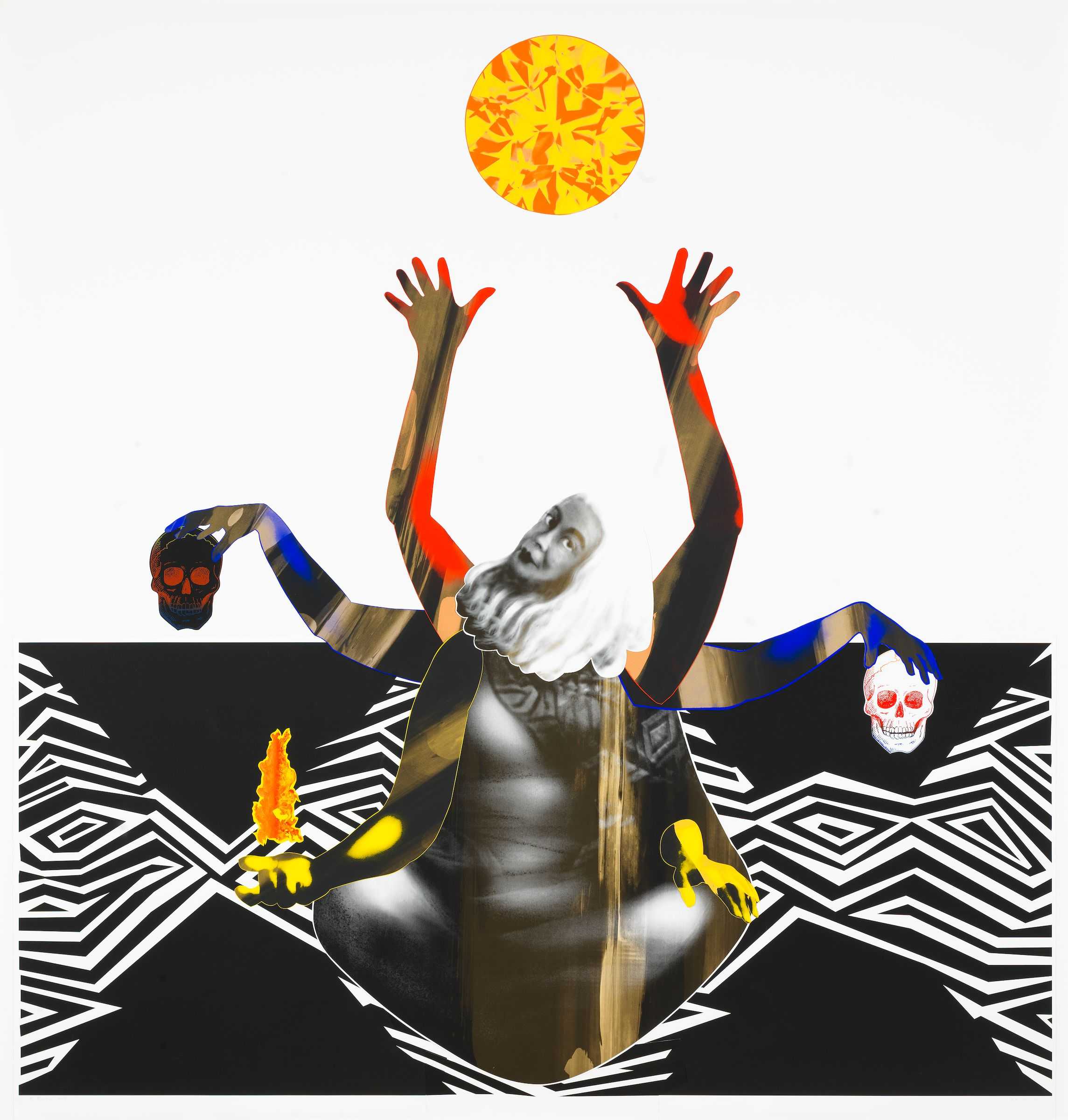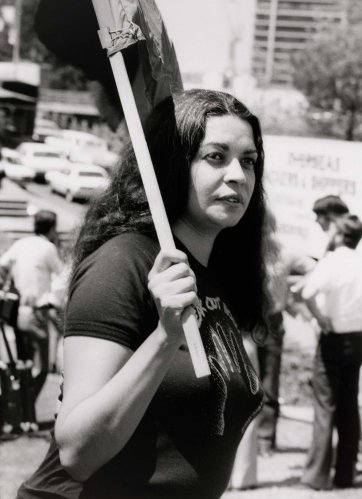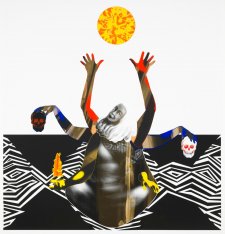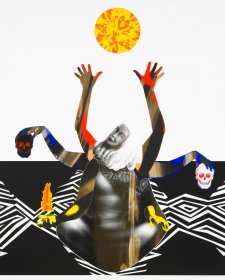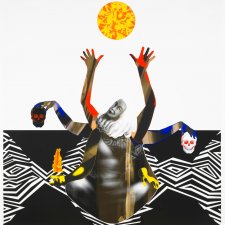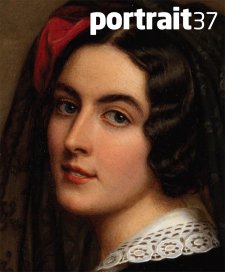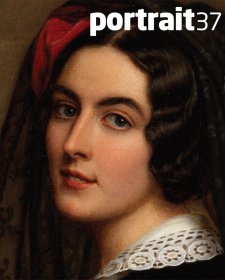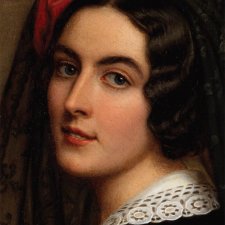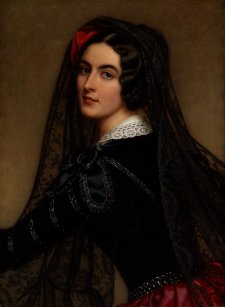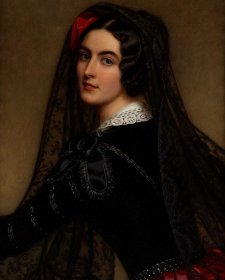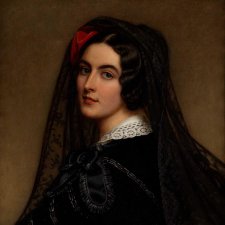Marcia Langton’s time is in high demand, and during the week that her portrait was unveiled at the National Portrait Gallery she had been called upon to respond at short notice to government legislation.
The Gallery commissioned artist Brook Andrew to create a portrait of Marcia Langton, and Brook and I drove to the airport to collect Marcia from her inward flight from Melbourne the morning the portrait was to be officially launched. The artist and sitter have been friends for many years and they had collaborated on the way in which the portrait was to depict Langton. Brook Andrew had planned to make a portrait of Langton as a follow up to his image of athlete Anthony Mundine created in 2005. The Gallery formally invited Andrew to create a major portrait of Langton in 2008; it was delivered to the gallery at the end of 2009, framed and prepared for display and launched in June. In his work artist Brook Andrew explores beauty, cultural and historical perception, and the limitations imposed by power structures. He uses photography, installation, print-making and graphic techniques to powerful effect. For the recent Biennale of Sydney he created an inflatable ‘jumping castle’ that referred to layered histories of conflict, and for the Sherman Contemporary Art Foundation he devised an enclosed environment enveloping exhibition visitors who needed to wear a special body suit to enter. These works of art feature bold geometric patterns that refer to the carved trees, or dendroglyphs, of traditional Wiradjuri culture. In Andrew’s large-scale portrait of Langton this optically arresting pattern becomes an energy field or elemental channel of water that grounds his representation of Langton as a spiritual being surrounded by symbolic motifs. Langton’s seated pose refers to her interest in Buddhism, black and white skulls signal the politics of humankind, and a radiant diamond-sun alludes to her successful work with Aboriginal communities and mining companies. These symbols are deliberately open to interpretation: the overall feeling is one of dynamism and energy.
Marcia Langton am was born in 1951 and is a descendant of the Yiman and Bidjara nations of Queensland. Foundation Chair and Professor of Australian Indigenous Studies at the University of Melbourne, she has published widely in the field of Aboriginal studies, on topics including land tenure, agreement-making, art and film. She was appointed a Member of the Order of Australia in 1993 for services to anthropology and advocacy of Aboriginal rights. In 2004 the Gallery acquired a portrait photograph of Langton taken by Juno Gemes at the National Land Rights Action in Brisbane in 1982. Langton has fought strongly for the rights of Indigenous Australians and resists the unproblematic categorisation of the achievements of many Indigenous Australians purely as activism. Langton’s achievements are emblematic in academic, legal, social and cultural contexts.
Marcia Langton had only seen a small image of the portrait and we arrived from the airport just as the Gallery opened its doors to the public for the day. The portrait had just been installed in preparation for its official launch and I guided Marcia and Brook from the Gallery entry hall to where the portrait is prominently displayed. Marcia was silent as she observed the finished work for the first time. Later she told a reporter she considers the portrait ‘stunning’.
